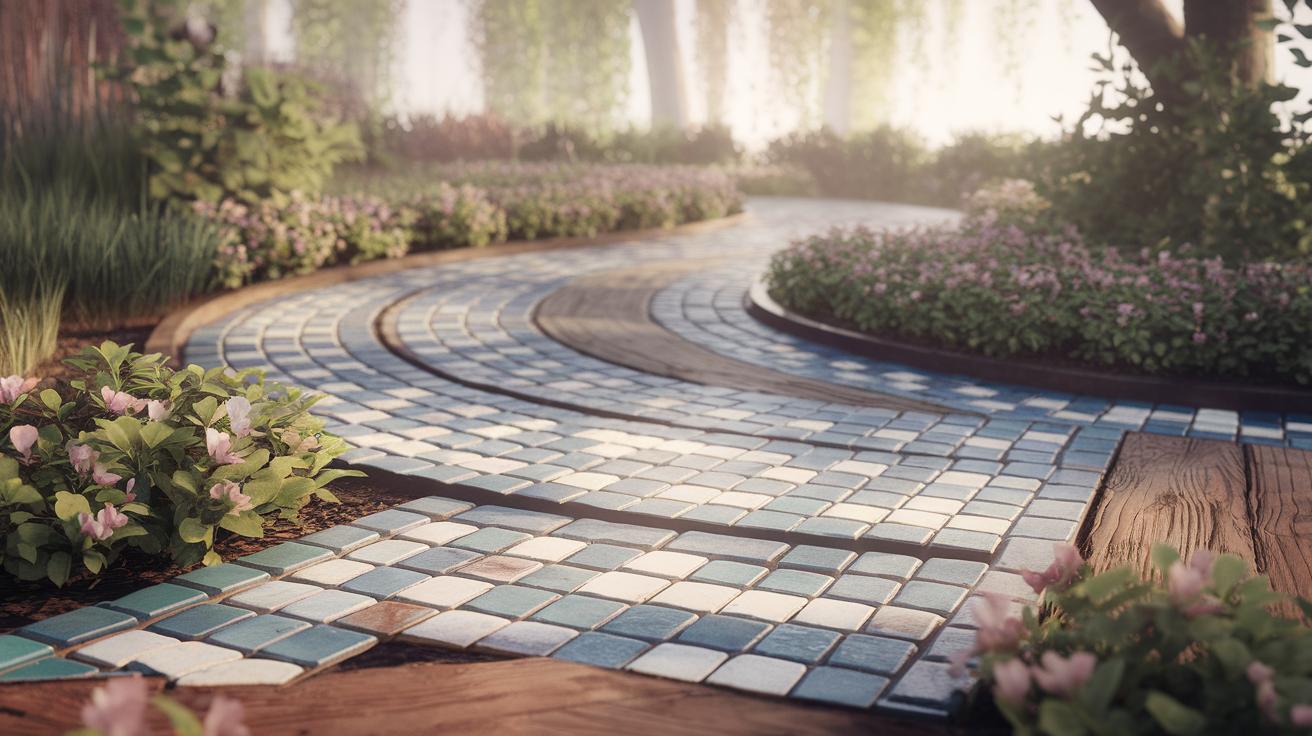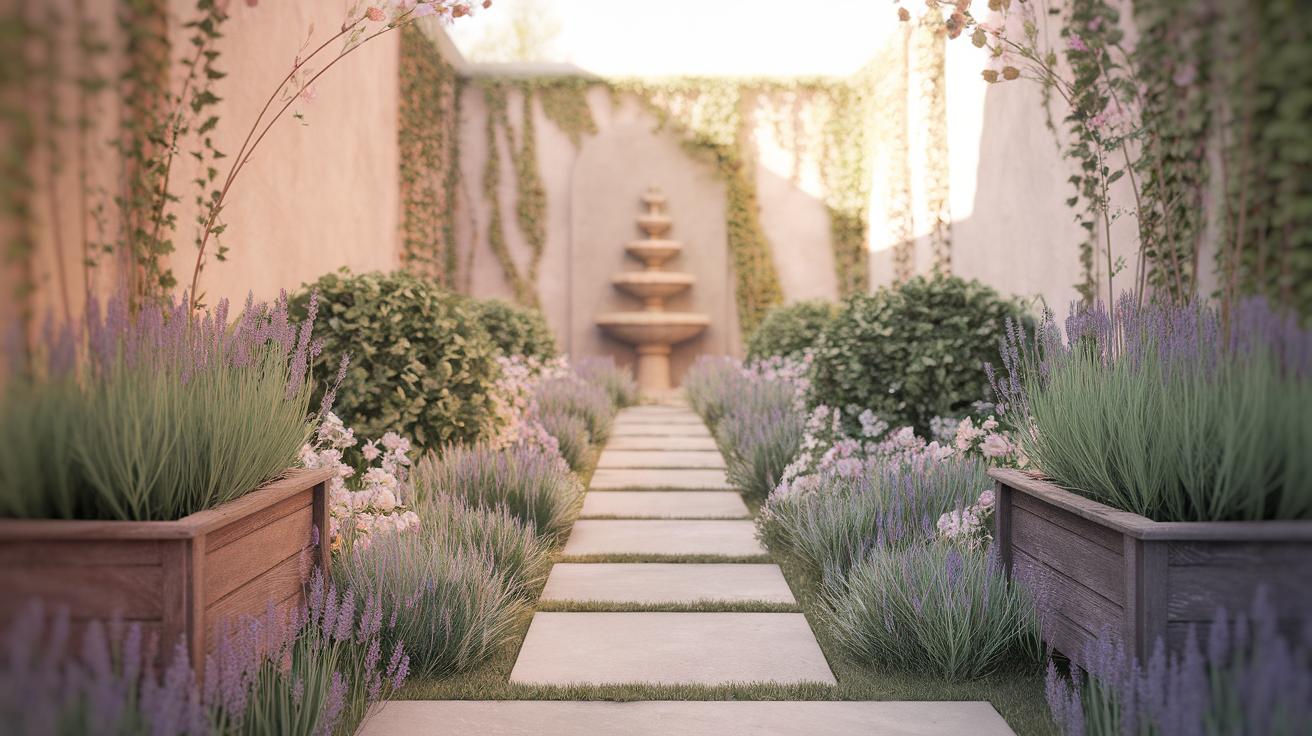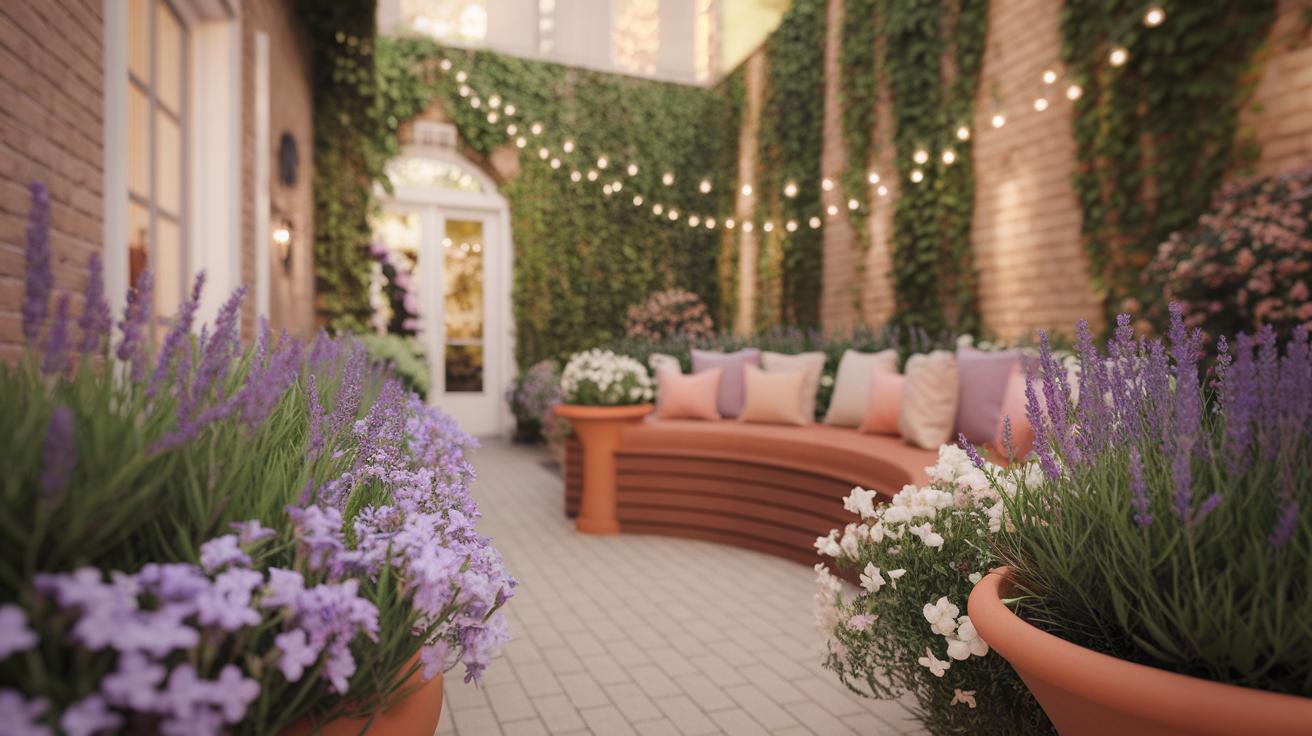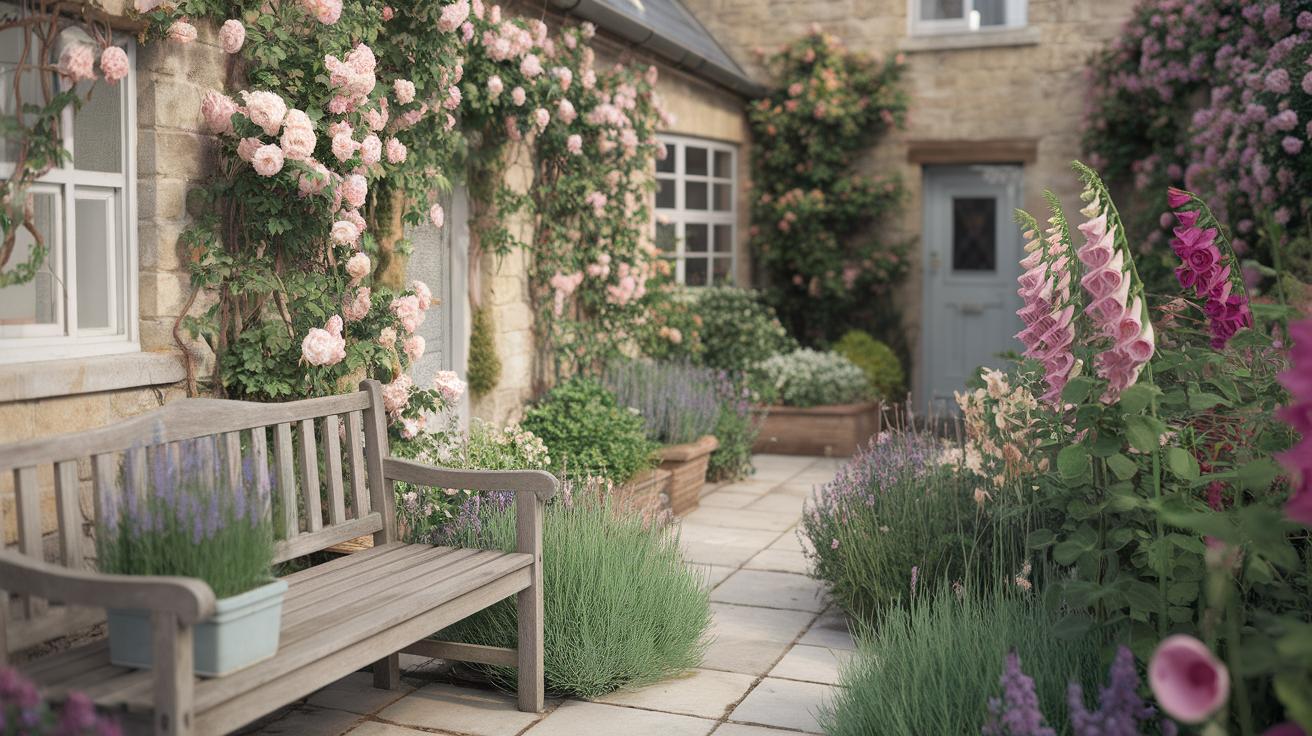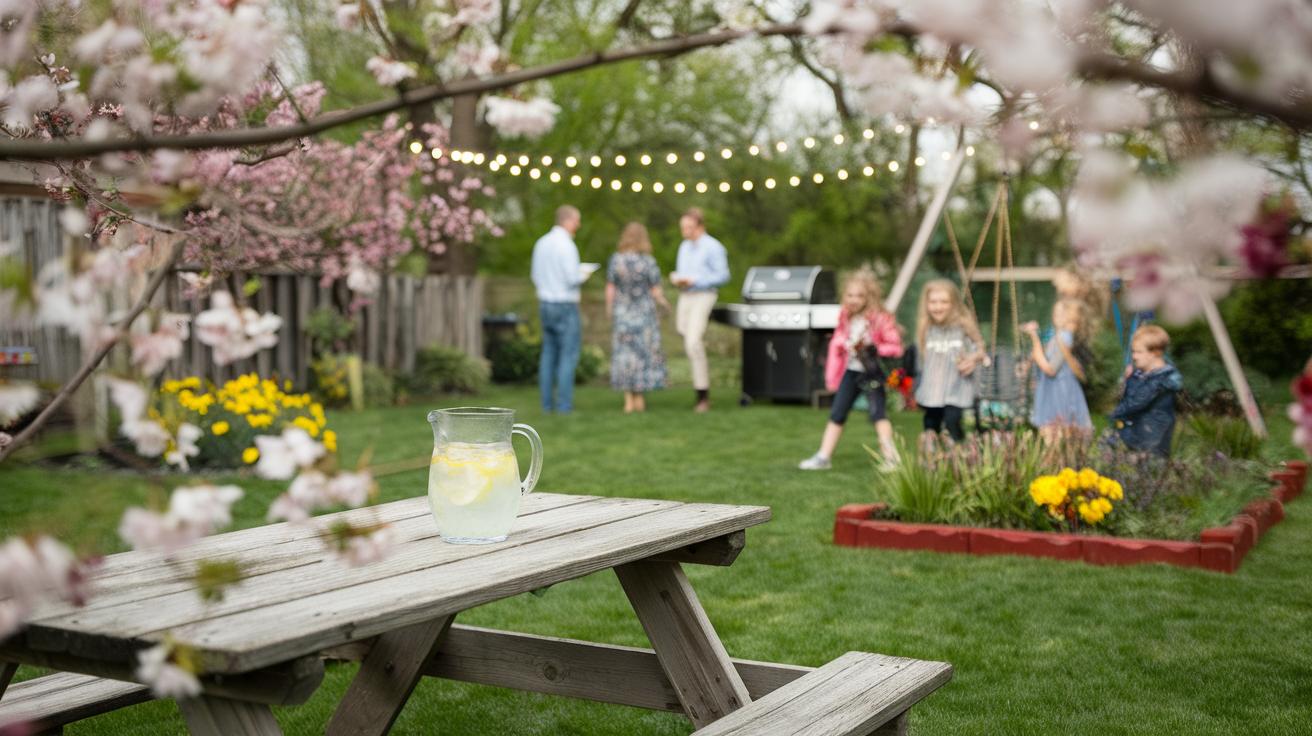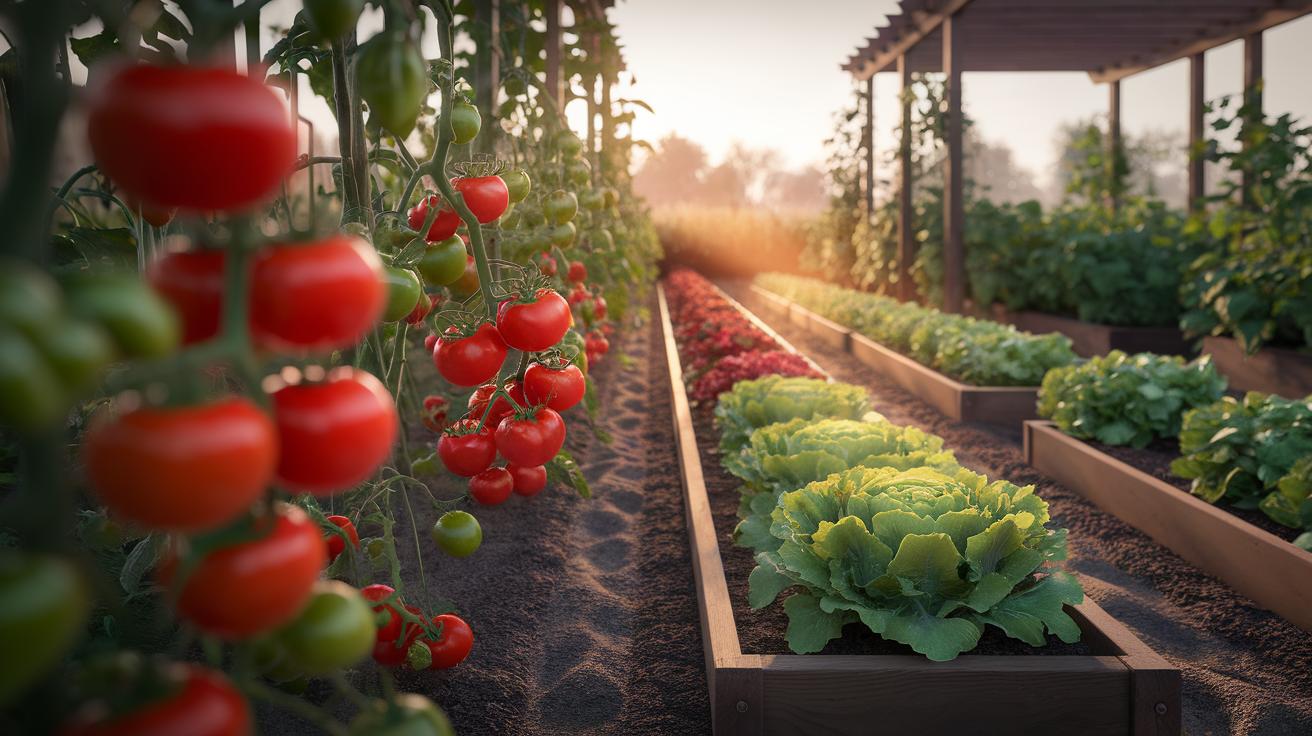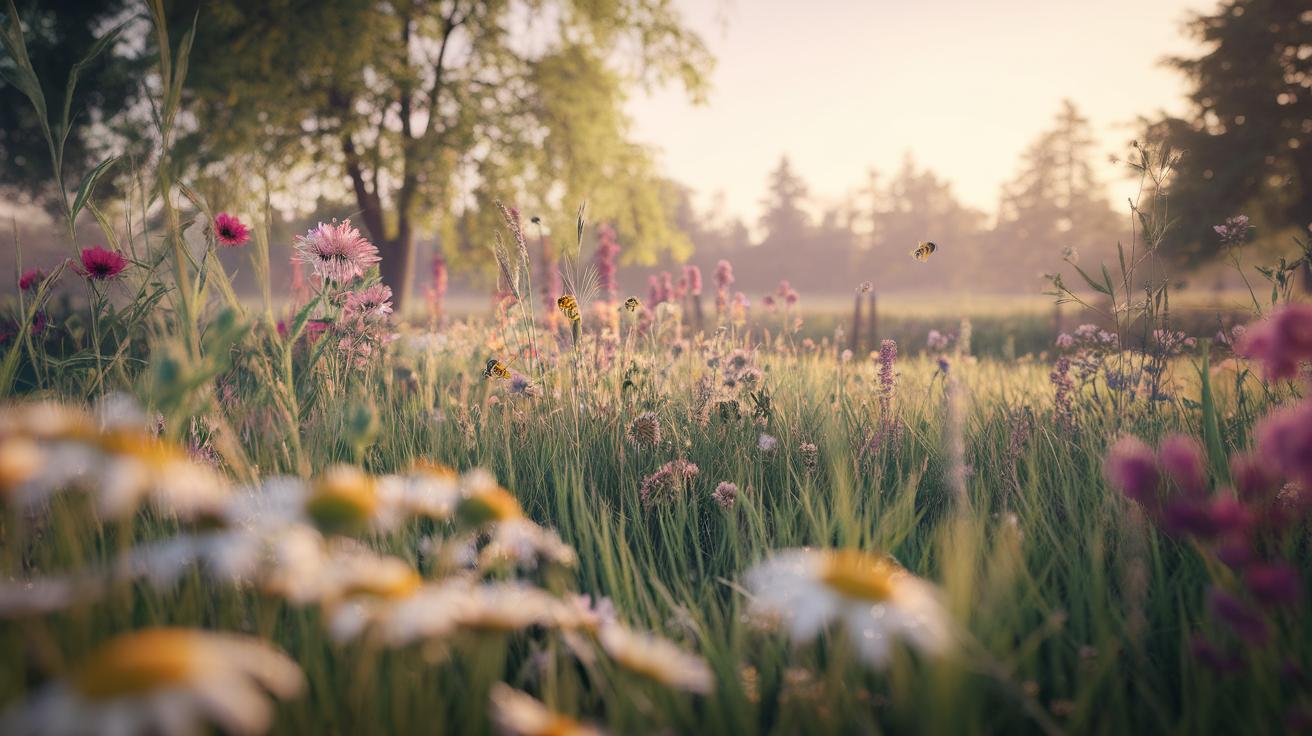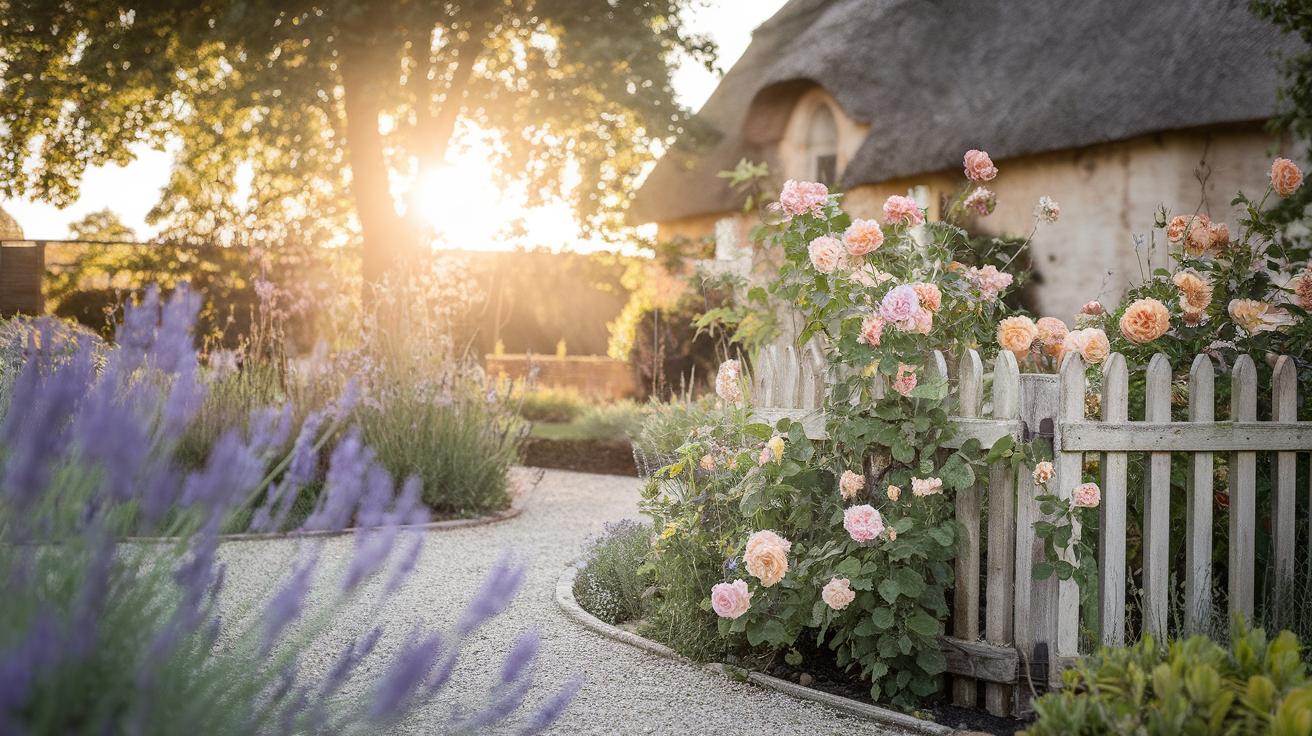Introduction
Designing a garden pathway offers a unique chance to add beauty and function to your outdoor space. A pathway guides visitors and helps organize your garden layout. Choosing the right materials and design style can bring your garden to life. You can create a natural look or a structured walkway depending on your taste and the garden’s theme. Your pathway will become a central feature, making your garden more welcoming and enjoyable.
Your choice of materials shapes the pathway’s character and durability. Using creative materials like stone, wood, or recycled elements adds personality and sustainability. As you plan your garden pathway, consider the environment, maintenance, and how the path fits with your overall garden style. Thoughtful planning ensures a pathway that meets your needs and enhances your garden’s appeal.
Understanding the Purpose of Your Garden Pathway
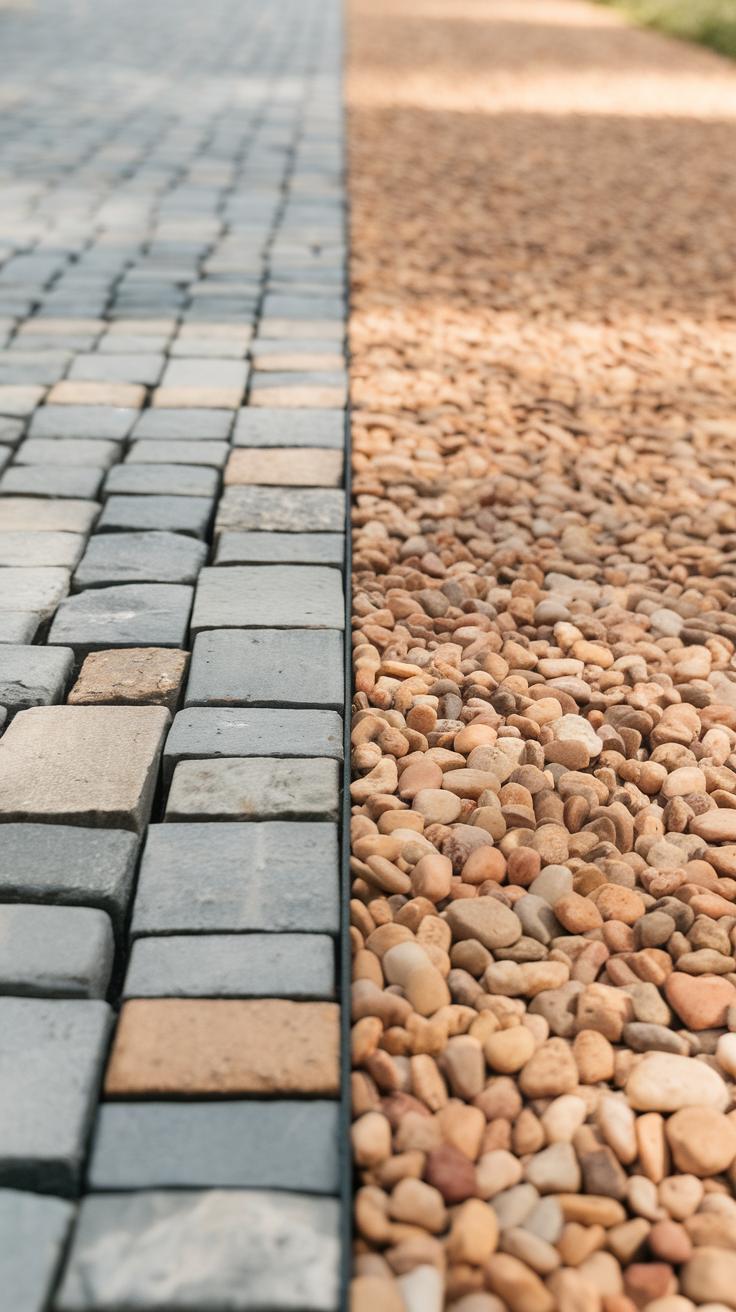
A garden pathway guides people through your outdoor space. It helps control movement and prevents stepping on delicate plants or muddy areas. Pathways also organize your garden by creating clear sections or zones, making it easier to manage different areas like flower beds, vegetable patches, and seating spots.
Paths add to the overall look of your garden. They can frame greenery, highlight certain plants, or connect features like fountains and benches. When you understand what you want your path to do, you can choose the right materials and design. For example, a simple stone path works well for a natural look, while bricks or tiles might match a formal garden.
Knowing the purpose guides your choices, saving time and effort. It ensures your pathway fits your lifestyle and garden style.
How a pathway improves your garden
A pathway makes moving through your garden easier. Instead of walking on grass or soil, you have a solid surface that stays clean and safe, even after rain. This helps keep shoes clean and plants protected from foot traffic.
Paths also add structure to your garden. They define boundaries between different areas and create a sense of order. This structure can highlight focal points like a statue or a colorful flower bed.
Visually, a well-crafted path can add texture and color contrasts. It draws your eye, making your garden feel more inviting and complete. Imagine walking confidently through a neat, inviting path instead of stepping over uneven ground.
Questions to consider before planning
Start by thinking about how you move through your garden. Where do you walk most often? What spots should connect? Consider if your garden style is traditional, modern, or rustic, since this affects the materials that will look best.
Ask yourself how much time you want to spend on upkeep. Materials like gravel may need more regular maintenance than concrete or pavers. Also decide whether you want the path to blend in or stand out as a design feature.
Think about your budget and how the pathway fits with other outdoor features. What mood do you want to create? Asking these questions helps you design a path that works well with your lifestyle and garden space.
Selecting the Right Location and Layout

Choosing where to place your garden pathway means considering how people move through your garden. Watch how you and others naturally walk in the space. Use these traffic patterns to decide the most practical route. Think about key points you want to connect, such as the patio, garden beds, or a seating area. Your path should guide visitors smoothly between spots without feeling forced or awkward.
Layout shapes influence both function and style. Straight paths work well for direct routes and formal gardens. Curved or meandering paths fit better in relaxed, natural settings. Curves can create a sense of discovery, inviting you to explore what’s around the bend. When space is limited or the garden has clear lines, straight paths make the best use of area.
Consider your garden’s existing features. Do you want to highlight a water feature or avoid stepping on flower beds? Let these points shape your layout. Think through how the path will feel to walk along—will it be easy and efficient, or leisurely and scenic? The right place and layout bring order and enjoyment to your garden.
Planning your pathway route
Begin by sketching your garden on paper or using an app. Mark entrances, plants, and other structures. Walk the garden and imagine your path stepping through it. Use a measuring tape or wheel to figure out distances between points you want to connect. These numbers help you estimate materials needed and cost.
Use sticks or garden hoses to outline your proposed path. This physical guide helps you see how each route fits and feels in real space. Adjust the path until it looks natural and fits well around plants or features. Visualizing the route makes sure your path flows nicely with the garden’s design.
Ask yourself: Does this path feel clear and comfortable to walk? Will it handle foot traffic without damaging plants? Could you add features like lighting or edging easily? Taking time to plan saves work later and ensures your path serves both practical and aesthetic goals.
Matching layout to garden style
Formal gardens thrive on order and symmetry. Straight or gently angled paths highlight this style well. They create neat lines that frame plants and garden structures. If your garden has clipped hedges or manicured lawns, a straight path will enhance that look.
Cottage or wild gardens benefit from soft curves and meandering routes. These layouts feel natural and inviting. They let visitors discover hidden corners and bring a relaxed rhythm to the garden space. Curved paths blend nicely with informal plantings and varied textures.
For modern gardens, simple geometric shapes or a mix of straight and angled lines often work best. The path can serve as a design element itself, reflecting the overall clean and uncluttered style. Match your layout to how you want your garden to feel. This ensures your pathway supports the garden’s character and mood.
Choosing Creative Materials for Your Pathway
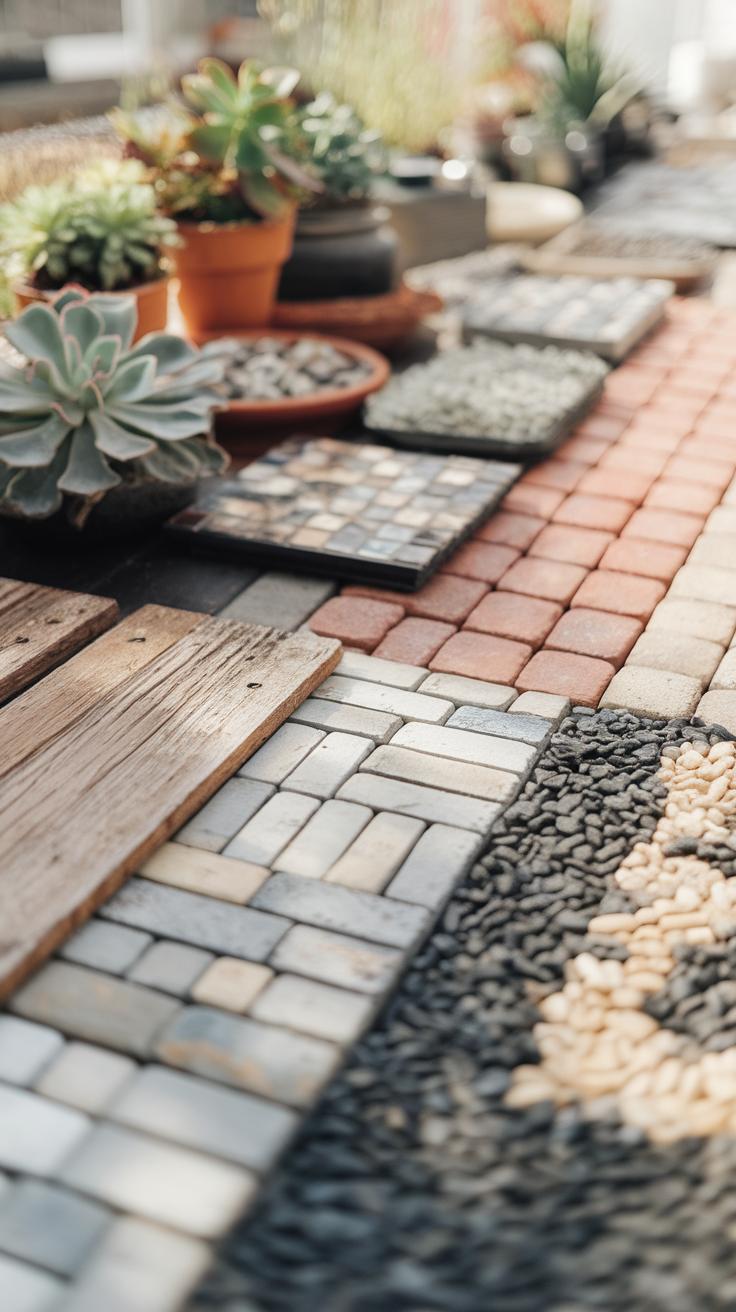
Your garden pathway is more than just a route—it sets the tone for your outdoor space. Picking the right material shapes the look, feel, and function of your walkway.
Stone offers a timeless appearance and strong durability. Flagstone or slate create natural charm but can be expensive and tricky to install. Brick gives a classic, structured look and often fits well in formal gardens. It wears well but may need occasional re-leveling.
Wood creates warmth and suits rustic or forested gardens. Cedar and redwood resist decay but need regular maintenance to avoid rotting. Gravel offers easy installation and good drainage but can scatter and require refilling.
Recycled materials are gaining interest. Old bricks, broken concrete slabs, or crushed glass can add uniqueness while lowering costs. They often reduce waste and invite creativity but may vary in durability.
Think about how the material will stand up to your climate, foot traffic, and maintenance capabilities. Which qualities matter most for your pathway’s daily use and style?
Natural Materials versus Manufactured
Natural materials like flagstone or wood bring organic textures and colors that blend into your garden. Stone can last decades but sometimes costs more upfront. Wood feels inviting but may not last without upkeep.
Manufactured materials such as brick or concrete offer uniform shapes and easier installation. Concrete can be very affordable and durable but might look less natural. Brick adds historic charm and handles heavy use well.
Cost often differs between these groups. Natural materials usually require more labor to install. Manufactured materials give budget-friendly options and standard sizing helpful for precise layouts.
Since durability varies, consider where your path goes and how much wear it will receive. Do you prefer an authentic look even if it means more care, or a practical, low-maintenance surface?
Innovative Materials to Explore
You can create a unique garden path using eco-friendly or reclaimed materials. Salvaged wood planks from old barns or pallets provide character and reduce waste.
Recycled glass crushed into chips can brighten pathways with color and sparkle. It also resists wear better than some natural stones. Rubber mulch made from recycled tires offers a soft, safe surface ideal for areas with children.
These creative options encourage thinking beyond traditional paths. They often cost less and help the environment by using leftover or repurposed materials.
Would you try mixing different materials to personalize your walkway? What kind of story do you want your path to tell?
Preparing the Ground for Your Garden Pathway

Before installing any pathway material, start by clearing the ground. Remove grass, weeds, roots, and debris to create a clean work area. This step prevents unwanted plants from growing through your pathway later. Use a shovel or spade to dig up the soil where the path will lie.
Next, mark the edges of your pathway using stakes and string or a garden hose shaped to your design. This helps you visualize the layout and keeps your work precise. Double-check the width throughout the path to maintain consistency.
After marking, level the soil inside the pathway outline. Use a rake to smooth the surface and remove any bumps or dips. Check the slope to allow water drainage away from your walkway, reducing future erosion or pooling.
Once the area is clear and level, add a base layer. Spread crushed stone, gravel, or sand about 3 to 4 inches deep. This layer supports the pathway materials to prevent shifting and sinking over time. Compact the base with a tamper or by walking firmly over it to create a solid foundation for your creative pathway.
Clearing and Marking the Area
Start by clearing all vegetation from your planned garden path. Slice through grass and roots using an edging tool or spade. Make sure the soil is exposed down to a stable layer. Removing organic material stops unwanted growth under your pathway.
Mark the edges carefully. Place stakes at the start and end points of your path. Run string between stakes to form straight or curved lines based on your design. Alternatively, a garden hose can outline softer curves. Clear defined edges help when digging and placing materials later.
Take a moment to confirm the width and flow of the path. Will it fit comfortably for walking? Are the curves smooth and practical? Adjust the layout before moving forward. Preparing a clear, measured work zone will save time during installation.
Building a Stable Base
A durable garden pathway needs a solid base to prevent movement. Start by laying down landscape fabric over your cleared soil to block weed growth while allowing water to drain.
Next, add a 3- to 4-inch layer of coarse gravel or crushed stone. Spread it evenly across the pathway area. Use a rake to level the gravel and fill in any holes. Compact this base with a hand tamper or heavy plank pressed firmly down to pack the stones tightly.
For finer materials like sand or stone dust, add them after the gravel layer to create a smooth surface. This layer helps lock stones or bricks in place. Building this layered foundation reduces sinking and shifting, keeping your pathway sturdy for years.
Techniques for Laying Different Pathway Materials
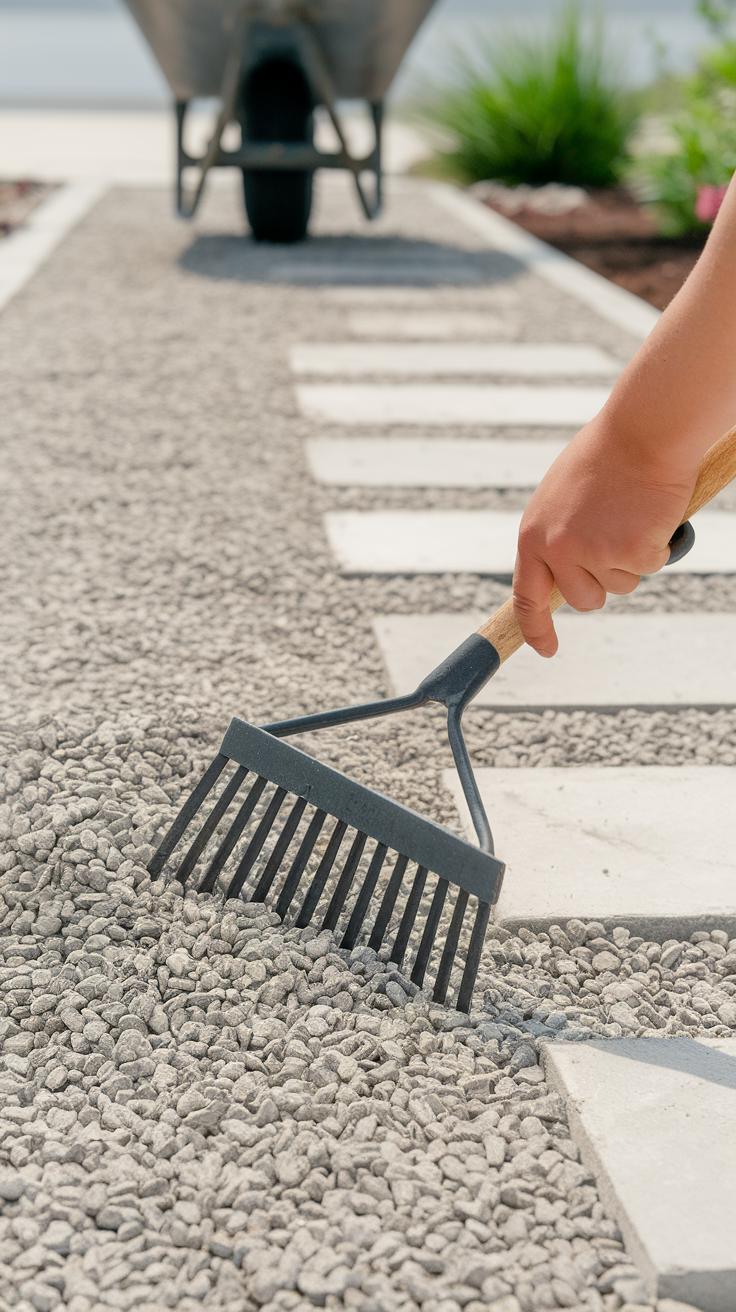
When installing your garden pathway, the choice of material affects how you lay it down. Each material demands careful handling to create a surface that feels stable and looks neat.
Start by deciding which path style fits your space and move on to precise installation methods. This chapter guides you in placing bricks, stones, wooden planks, and spreading gravel without unevenness or gaps.
Installing Stone and Brick
Place stones or bricks on a flat, compacted base. Keep a small, consistent gap between each piece. This space helps with drainage and prevents shifting.
Align them in patterns such as running bond or herringbone to add visual interest. Use a rubber mallet to tap each piece gently into place, leveling as you go. Check often with a spirit level to maintain a flat surface. Filling gaps with sand or fine gravel will lock them securely and reduce movement.
Working with Wood and Gravel
Lay wood planks over a firm base, like compacted soil or a sand layer, to keep them from sinking. Fasten planks using hidden stakes or corrosion-resistant screws into wooden supports beneath. Make sure the planks don’t wobble when stepped on.
For gravel paths, install a sturdy edging first to hold the material within the walkway. Spread gravel in thin, even layers, raking and compacting each layer firmly. Add more gravel until the surface reaches the desired height. Recheck edges regularly to keep the shape tidy.
Incorporating Edging and Borders
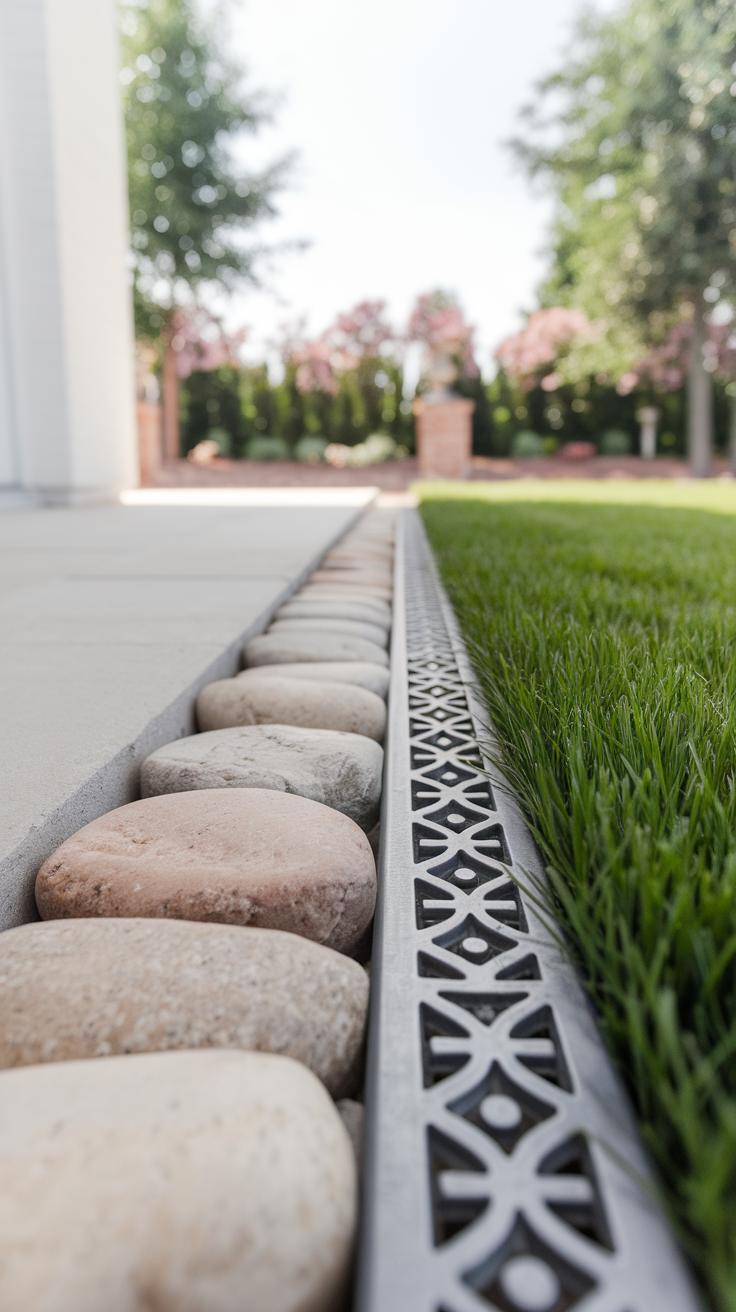
Edging plays a key role in keeping your garden pathway neat and intact. It holds pathway materials like gravel, mulch, or stones firmly in place. Without edging, these materials can scatter, making your path look messy and uneven. Edging also defines the pathway’s shape, creating a clear boundary between your walkway and garden beds or lawn.
You can choose from many edging styles depending on the look and function you want. Some options are rigid, like stone or metal, which provide a firm boundary. Others, such as flexible plastic edging, bend easily around curves. Installing edging correctly will prevent movement and keep your pathway looking sharp for years.
How do you want your garden path to feel—natural, modern, or classic? Your edging choice can help set that tone while making your pathway easier to maintain.
Types of edging materials
Stone edging uses natural or cut stone pieces. It looks sturdy and blends well with garden settings. Stone is durable but can be heavy and expensive to install.
Metal edging, often made from steel or aluminum, offers a sleek, modern border. It resists weathering and holds shape well. However, it may get hot in the sun and can be sharp during installation.
Plastic edging is lightweight and easy to install, often flexible enough for curved paths. It’s affordable but less durable, and may break down over time in sunlight or extreme weather.
Wood edging gives a warm, organic look. Pressure-treated or cedar wood resists rot. Still, wood may need replacement sooner than stone or metal and can attract insects if untreated.
Installing edging for stability
To secure edging, dig a shallow trench matching its size and shape. Make sure it’s deep enough to hold the edging firmly but not too deep to cause instability.
Place edging materials into the trench and tap them down until they sit flush with or just above the pathway surface. For stone or wood, backfill the trench with soil or gravel to lock pieces in place. When using metal or plastic, stakes can hold them upright and prevent shifting.
Check that edges follow your pathway’s curve smoothly. Straight or curved lines affect both appearance and function. Press firmly on the installed edging to test for movement and add support if needed.
Your edging should act as a barrier that withstands foot traffic, weather, and time. What simple steps can you take to ensure it stays sturdy and your pathway gives a polished look year-round?
Adding Functional and Decorative Features
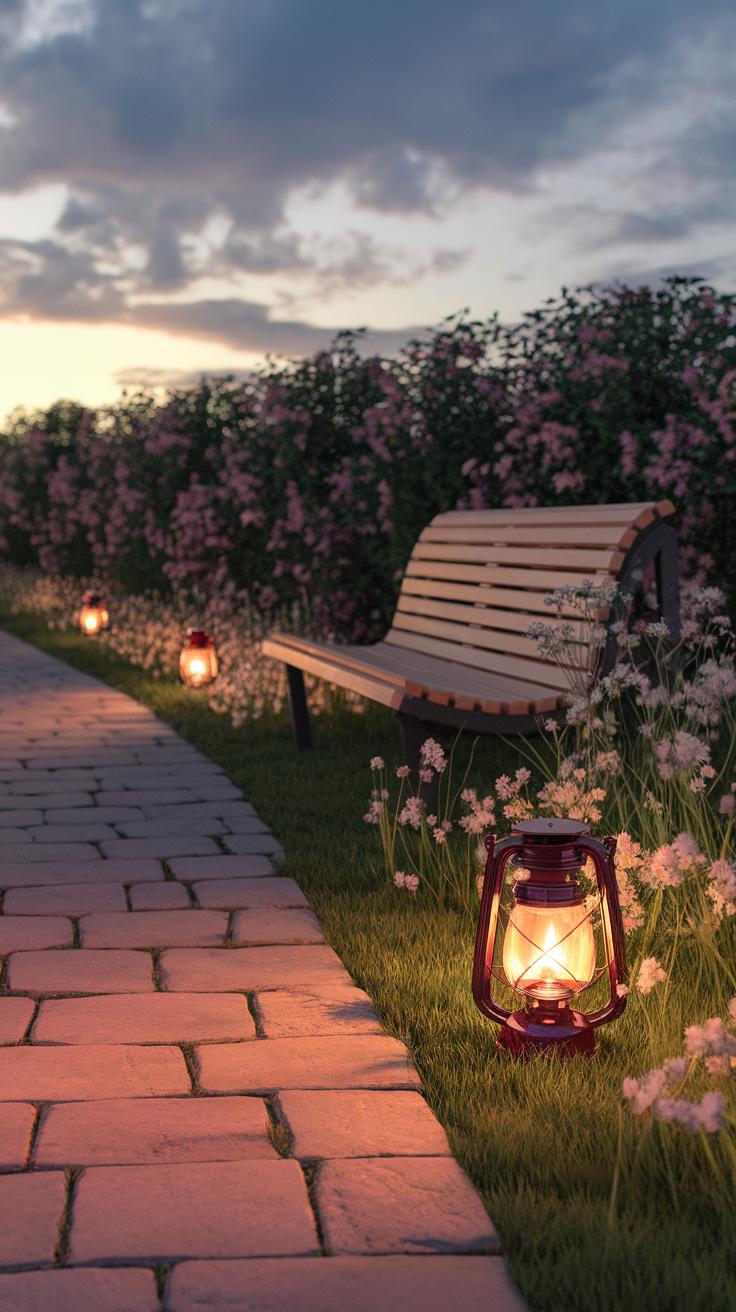
Lighting along your garden pathway improves both safety and the overall mood. Choose from solar lights, low-voltage LED fixtures, or classic lanterns depending on your style and budget. Place lights around curves, steps, and entrances to prevent trips and falls. Using soft uplights can highlight plants or trees, creating a welcoming atmosphere at night. Try spacing lights evenly to avoid dark patches, making your walkway inviting while guiding visitors.
Decorate your garden path with personal touches that reflect your taste. Colorful flowers or small shrubs can line the edges, adding vibrancy and variety. You might use decorative stones in contrasting colors or shapes to create borders or dots of interest along the walk. Incorporating small garden sculptures or wind chimes near the path can bring character. What kinds of accents will make your path feel more like your space? Think about items that catch your eye and add unique charm to your garden.
Maintaining Your Garden Pathway

Your garden pathway requires regular attention to stay safe and attractive. Dirt, leaves, and other debris can build up quickly, making the surface slippery or uneven. Cleaning your path often helps prevent moss and weed growth, which can damage materials and create tripping hazards.
Use a broom or leaf blower to clear loose debris each week. For more stubborn grime or moss, scrub the surface gently with a brush and a mild detergent. Avoid harsh chemicals that could harm nearby plants.
Weeds tend to sneak in through gaps between stones or bricks. Pull them by hand regularly. Applying natural weed barriers or organic herbicides can reduce their return. Think about how such routine care could extend the life of your pathway and keep it inviting year-round.
Regular cleaning and upkeep
Keeping your pathway clean starts with removing dirt and leaves before they settle. Sweep it often to stop breakdown of materials under moisture.
Power washing works well on stone or concrete but avoid using too much pressure on delicate surfaces. For hard-to-remove moss, a scrub brush and diluted vinegar solution provide an eco-friendly option.
Check for weeds regularly—hand-pulling is best to protect pathway edges. You might also add a layer of fine gravel or sand between stones to discourage plant growth.
Simple steps like these help prevent damage and keep the path looking neat and safe for walking.
Repairing common issues
Uneven spots can cause accidents and ruin the visual appeal of your garden path. Adjust loose pavers or stones by lifting them and resetting with fresh sand or gravel underneath.
If sections get cracked or broken, remove the damaged pieces carefully. Replace them with matching materials to maintain a consistent look. For gravel paths, refill bare patches to avoid erosion.
Keep wood elements like edging or stepping stones sealed to prevent rotting. Tighten any loose screws or nails to maintain stability.
Thinking ahead about repairs helps you avoid larger problems. How often do you inspect your pathway for small issues before they grow?
EcoFriendly Planning for Sustainable Pathways

Benefits of permeable pathways
Permeable materials let rainwater soak into the soil instead of running off hard surfaces. This helps keep the ground moist and reduces erosion along your pathway. When water seeps into the ground naturally, it refills underground water supplies and lowers the risk of flooding in your garden.
Using materials like gravel, porous concrete, or wood chips creates surfaces that absorb water. These choices improve the health of nearby plants and prevent soil loss. What if your pathway could also protect your garden’s ecosystem by managing water wisely?
Choosing permeable pathways reduces the need for complex drainage systems. This makes your garden easier to maintain and supports local wildlife that relies on stable soil conditions.
Choosing sustainable materials
Selecting eco-friendly materials means finding recycled, reclaimed, or sustainably harvested options for your garden path. Recycled bricks or pavers keep waste out of landfills and give your pathway character. Old wood from local sources, instead of new timber, reduces the demand for cutting down trees.
Another option is using stones or gravel sourced nearby. This cuts down on transportation emissions and supports local businesses. When visiting a building salvage store, you might find unique stones or tiles for your walkway that add personality while being earth-friendly.
Ask yourself what materials already exist around your home or community before buying new. How can you combine creativity with responsibility to build a pathway that respects the planet and your garden’s style?
Making Your Garden Pathway
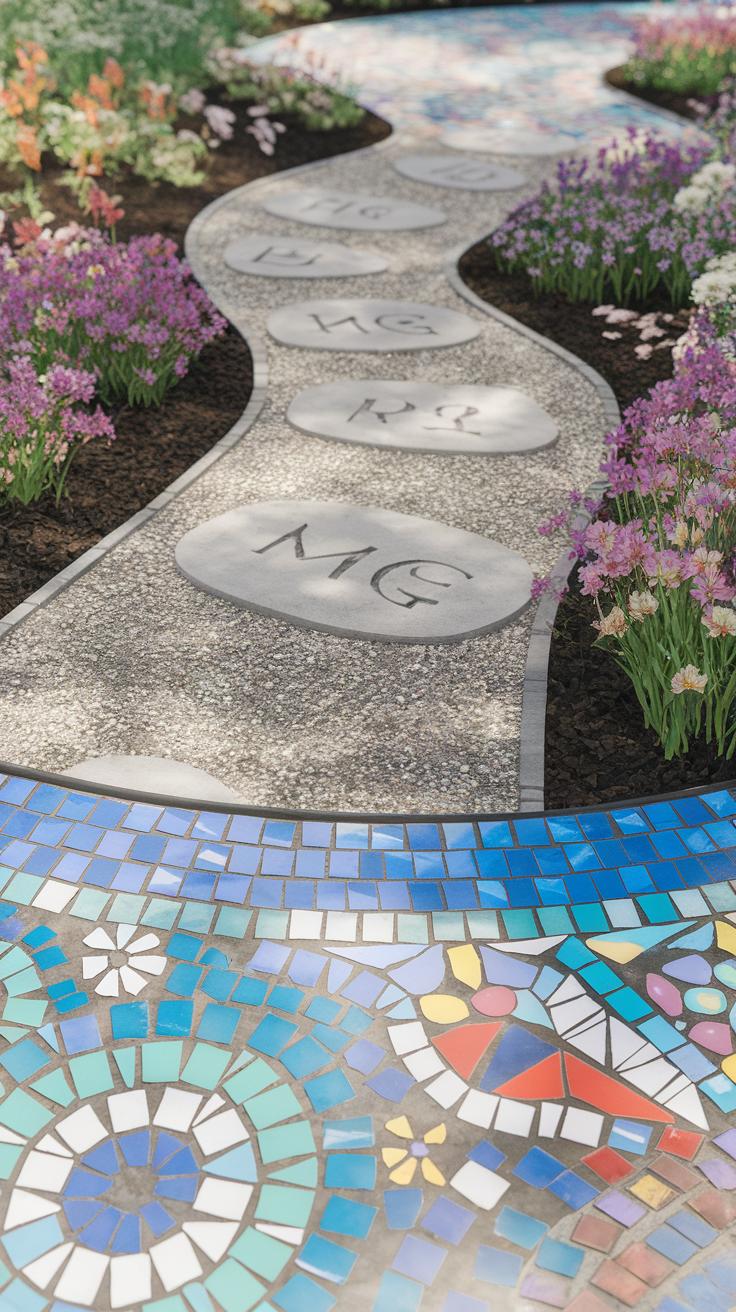
Think about how your garden pathway can show who you are. Try mixing materials like smooth stones next to rough wood, or colorful bricks laid in unusual shapes. You could create a zigzag pattern or combine round, square, and irregular stones for a unique look. Do you prefer a tidy, modern layout or a more natural, winding route? Your choice tells a story.
Use recycled or leftover materials to add character and keep costs down. What objects do you have around that could fit into your garden? Old tiles, broken pottery, or even glass bottle bottoms can add interest. Focus on what matches your tastes and the feeling you want in your outdoor space. Your pathway should feel personal and inviting, not just functional.
Design ideas to reflect your style
Colors make a big statement. Mix deep reds with pale grays or bright blues with earthy browns. Try combining smooth pebbles and rough bark chips for contrasting textures. Shapes can guide the eye — circles, zigzags, or straight lines all work differently. Do you want your pathway to stand out or blend in?
Think about the mood you want to create. Will you use bold colors to add energy or soft tones for calm? Experiment by laying out samples before fixing materials down. This way, you can see how different combinations look in natural light. Your pathway can become a canvas reflecting your personality.
Integrating the pathway with your garden
Connect your pathway to nearby plants and garden features. Surround stones with low-growing ground covers, or border paths with flowering shrubs for softness. How your pathway meets the lawn, flower beds, or patio affects the overall flow.
Keep the materials and colors in tune with the garden’s theme. If you have a rustic garden, rough wood and natural stone fit well. For a modern garden, sleek concrete or steel-edged paths work better. Think about sightlines as you walk. Does the path guide you to a favorite tree, bench, or fountain? Make sure your pathway feels part of the whole garden, not just an added element.
Conclusions
A well-planned garden pathway improves your outdoor space and offers a practical solution for movement and aesthetics. Selecting creative and suitable materials makes your pathway durable and attractive. Think about the pathway’s size, shape, and materials to blend seamlessly with your garden. This approach helps you build a pathway that you will appreciate for years to come.
Creating a garden pathway invites you to engage with your garden and personalize it. Experiment with different materials and designs to find what works best for you. The pathway you build can become an expression of your style and a practical feature that supports your garden’s use and enjoyment. Taking the time to plan and build carefully pays off in a beautiful and functional garden addition.


